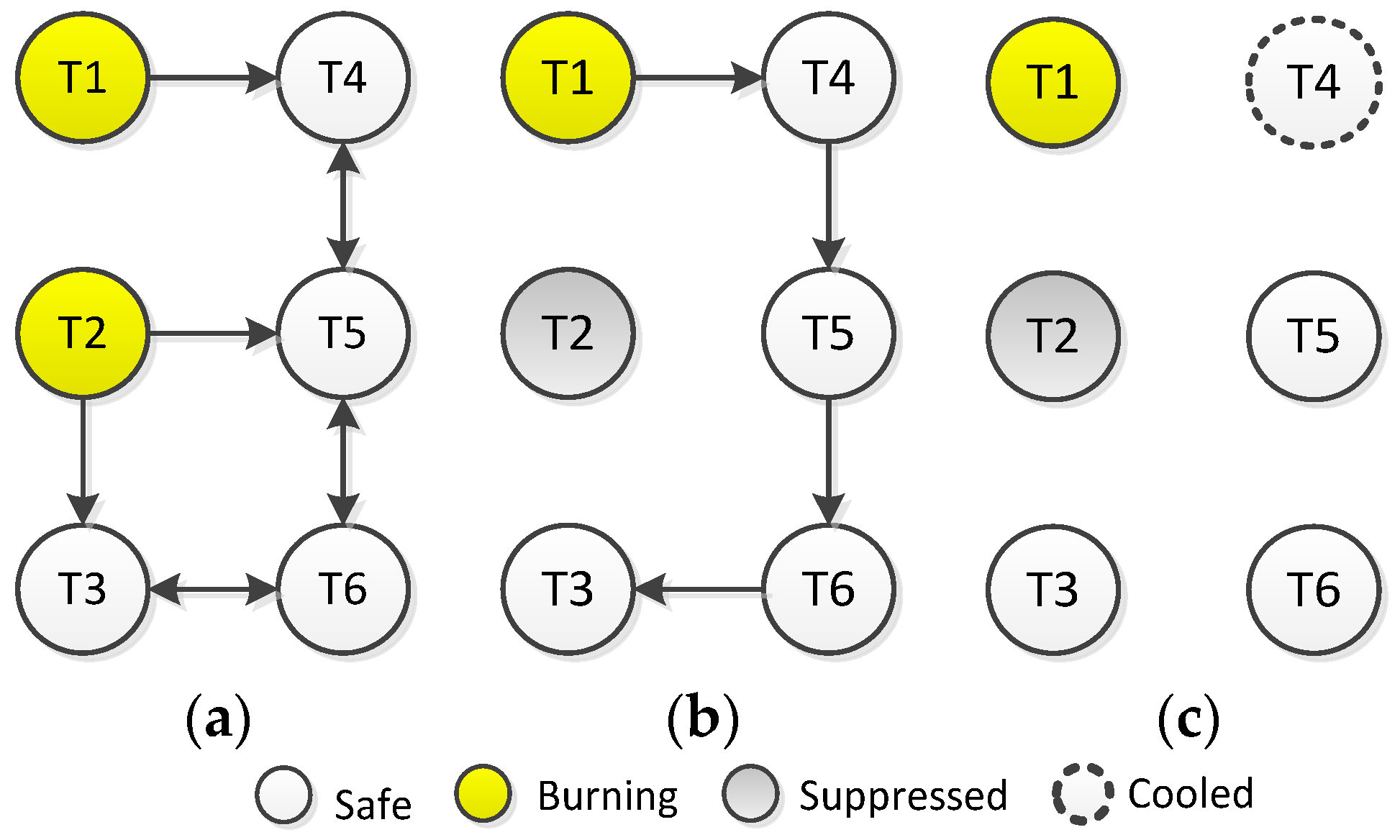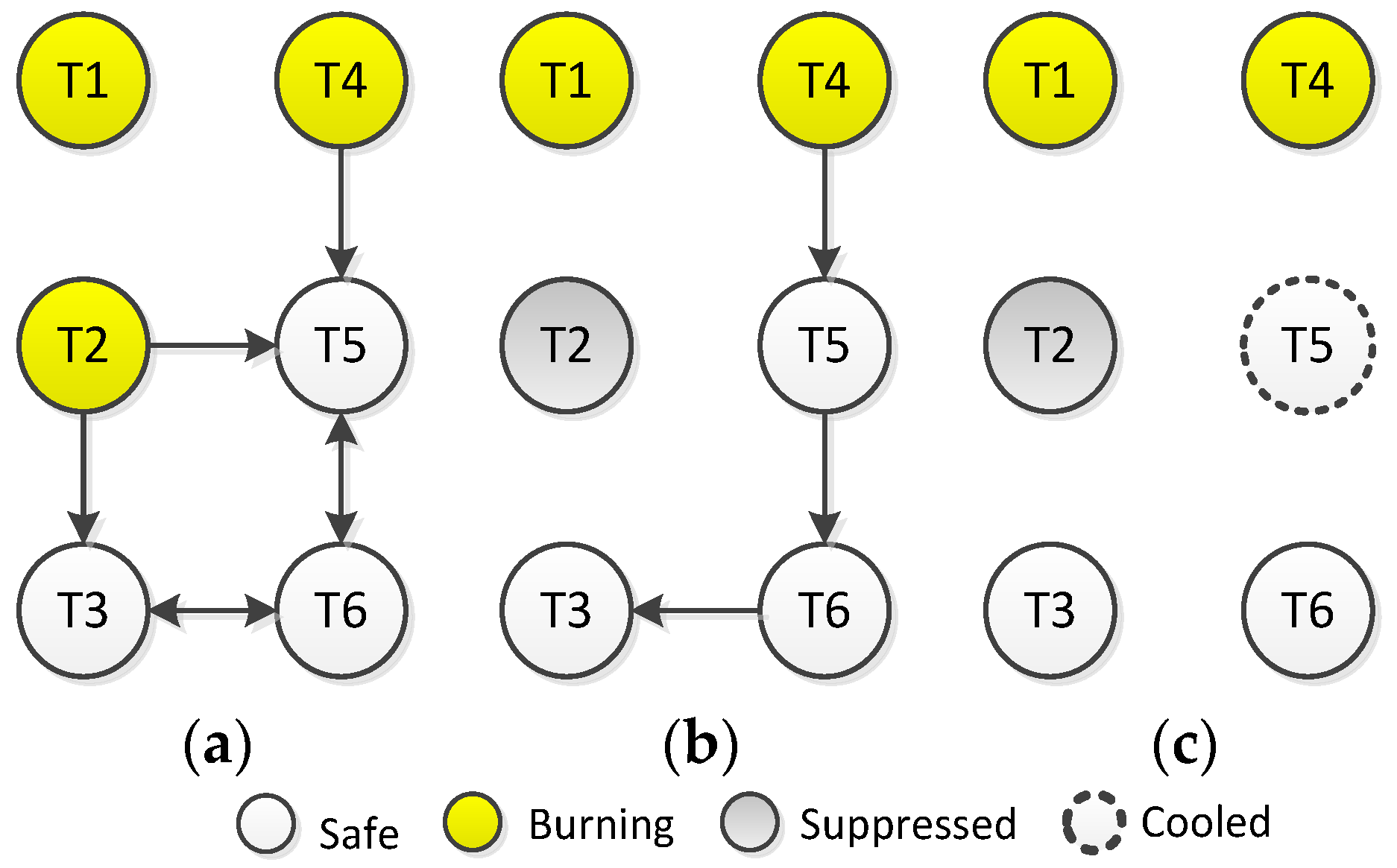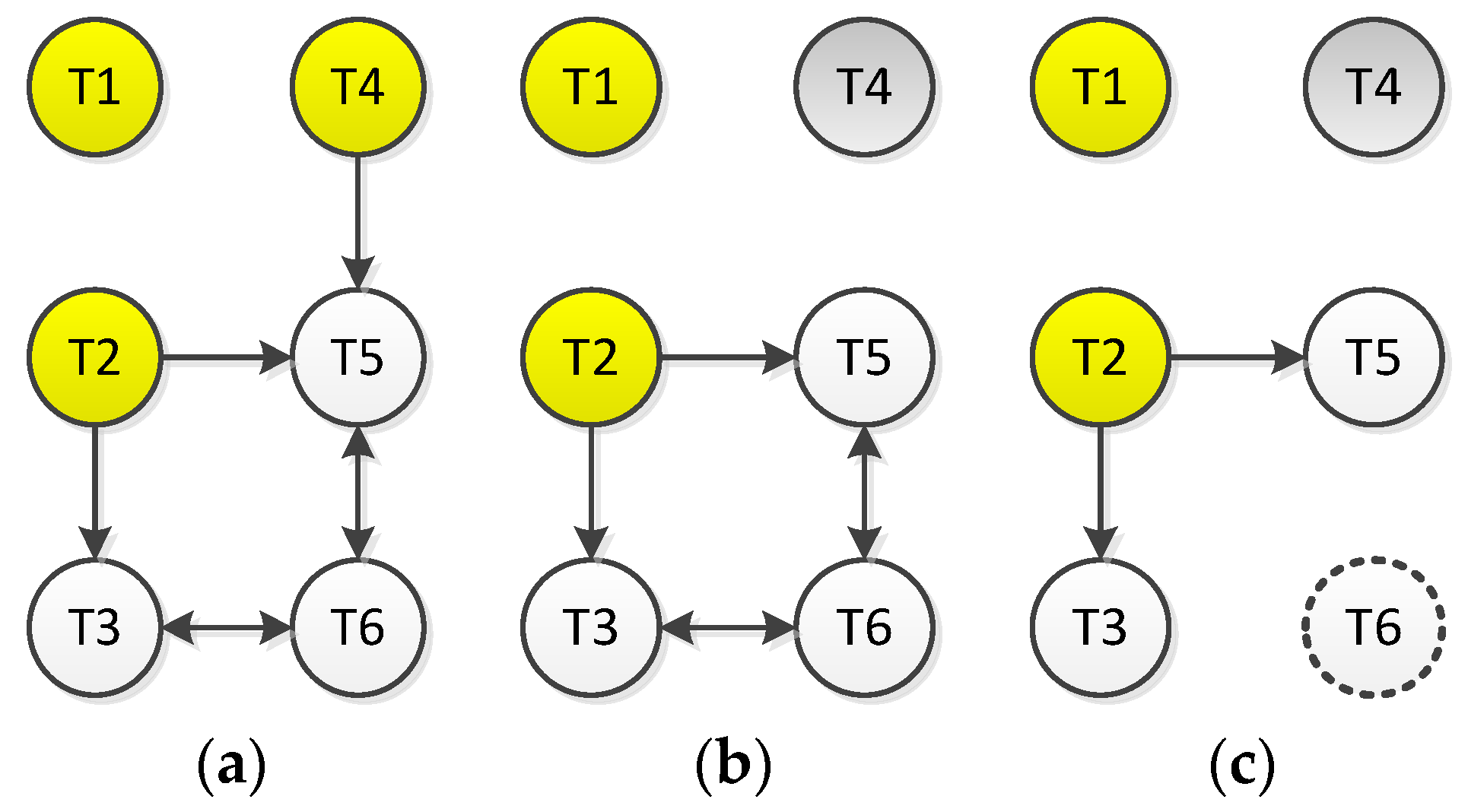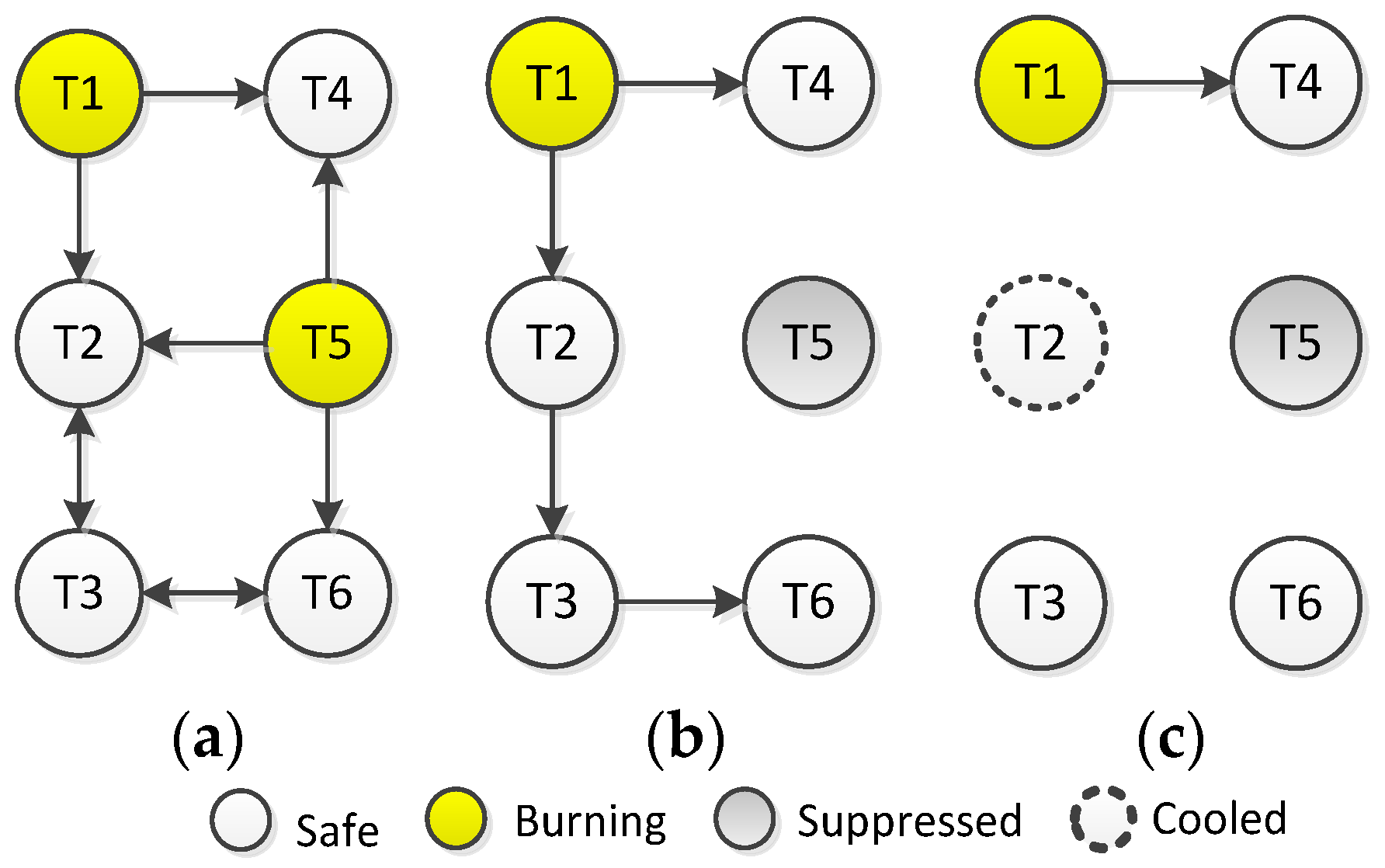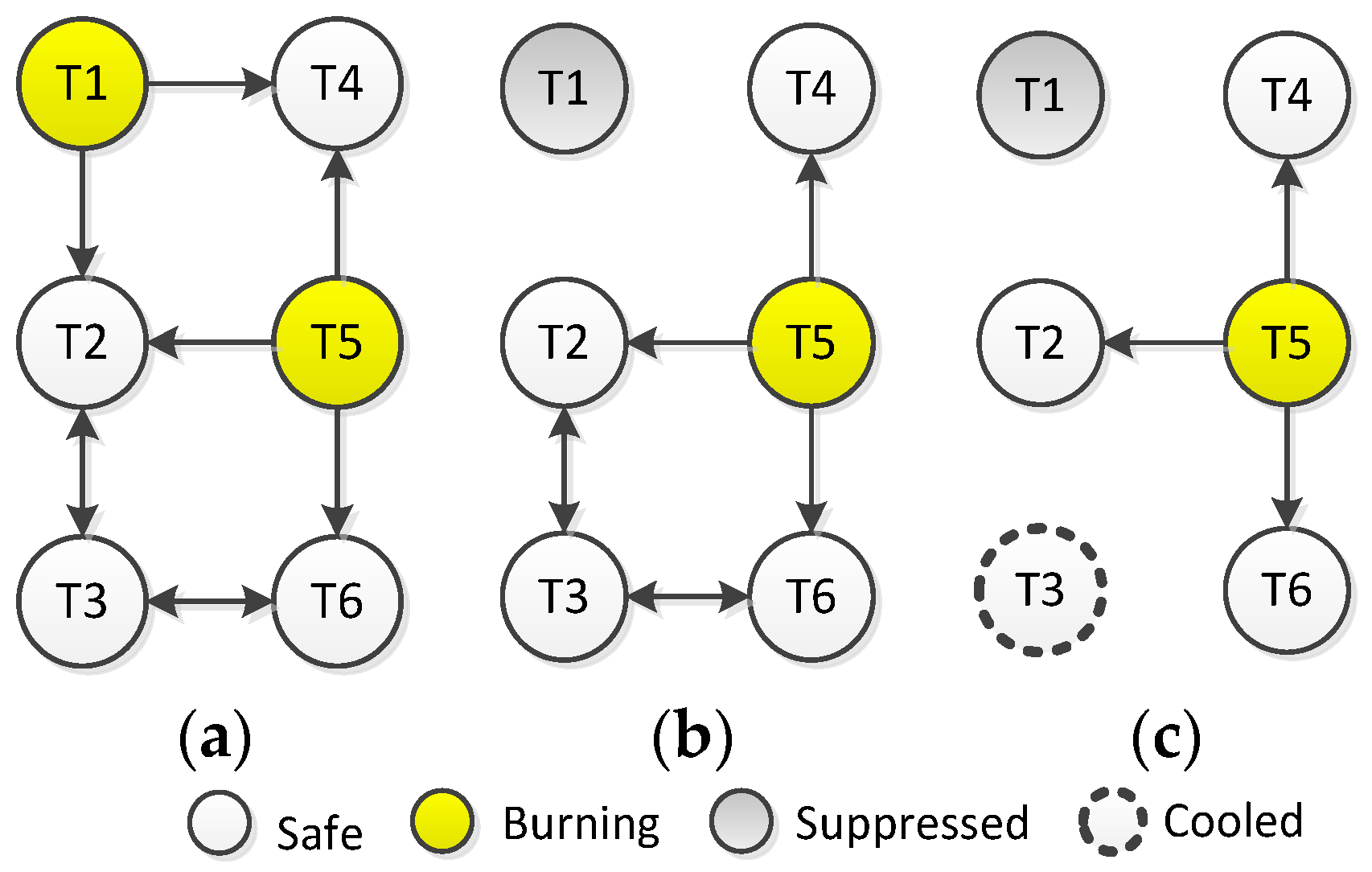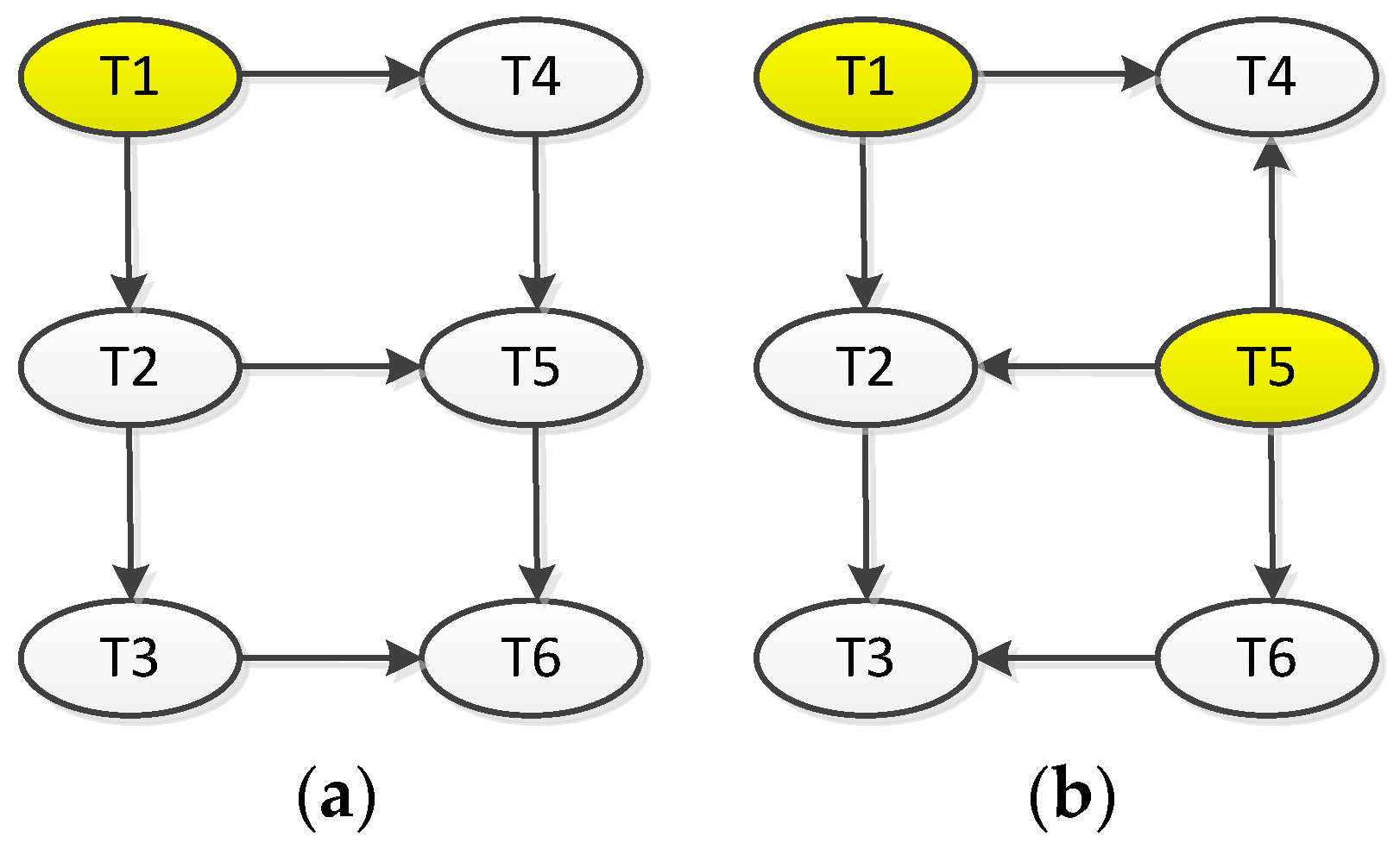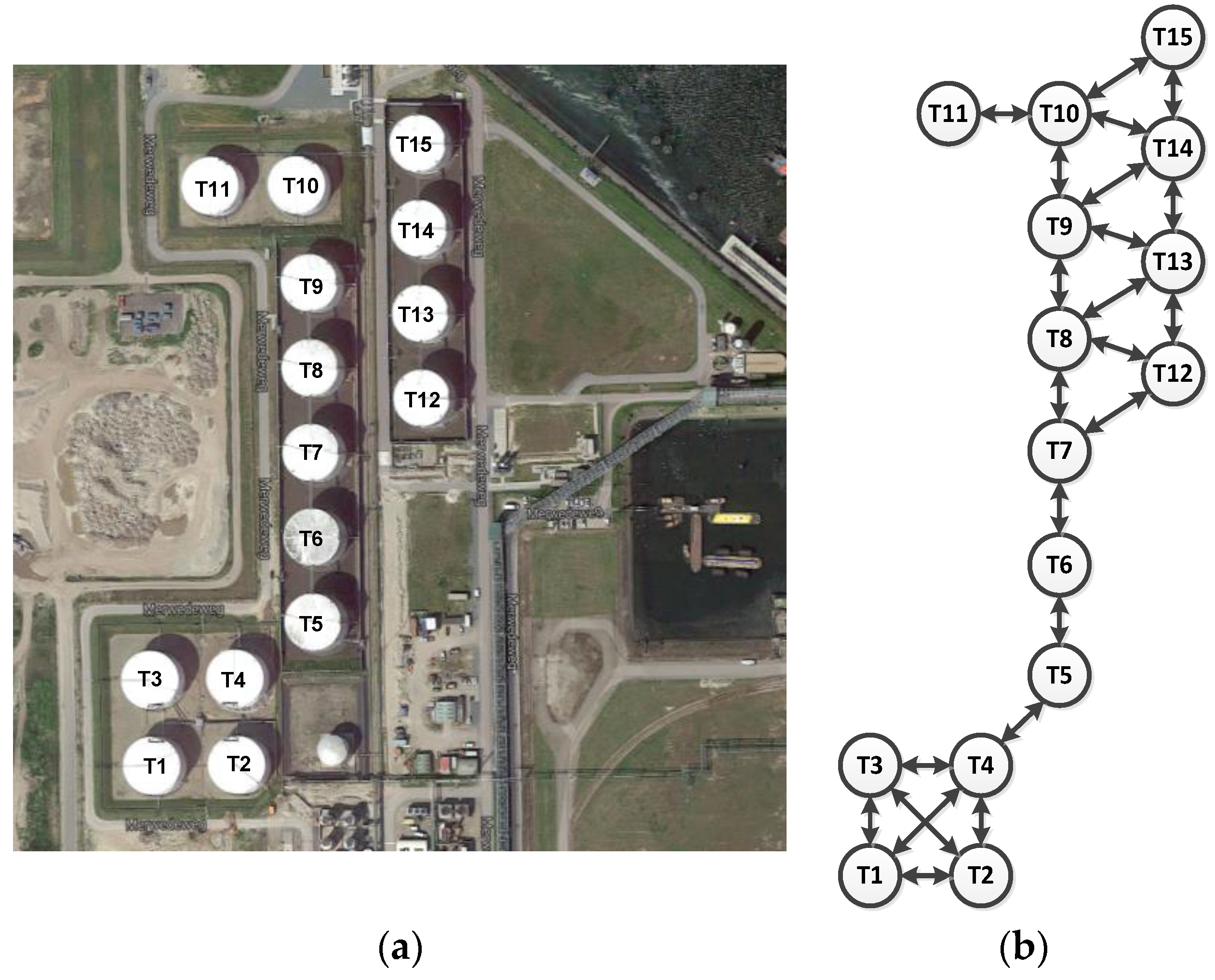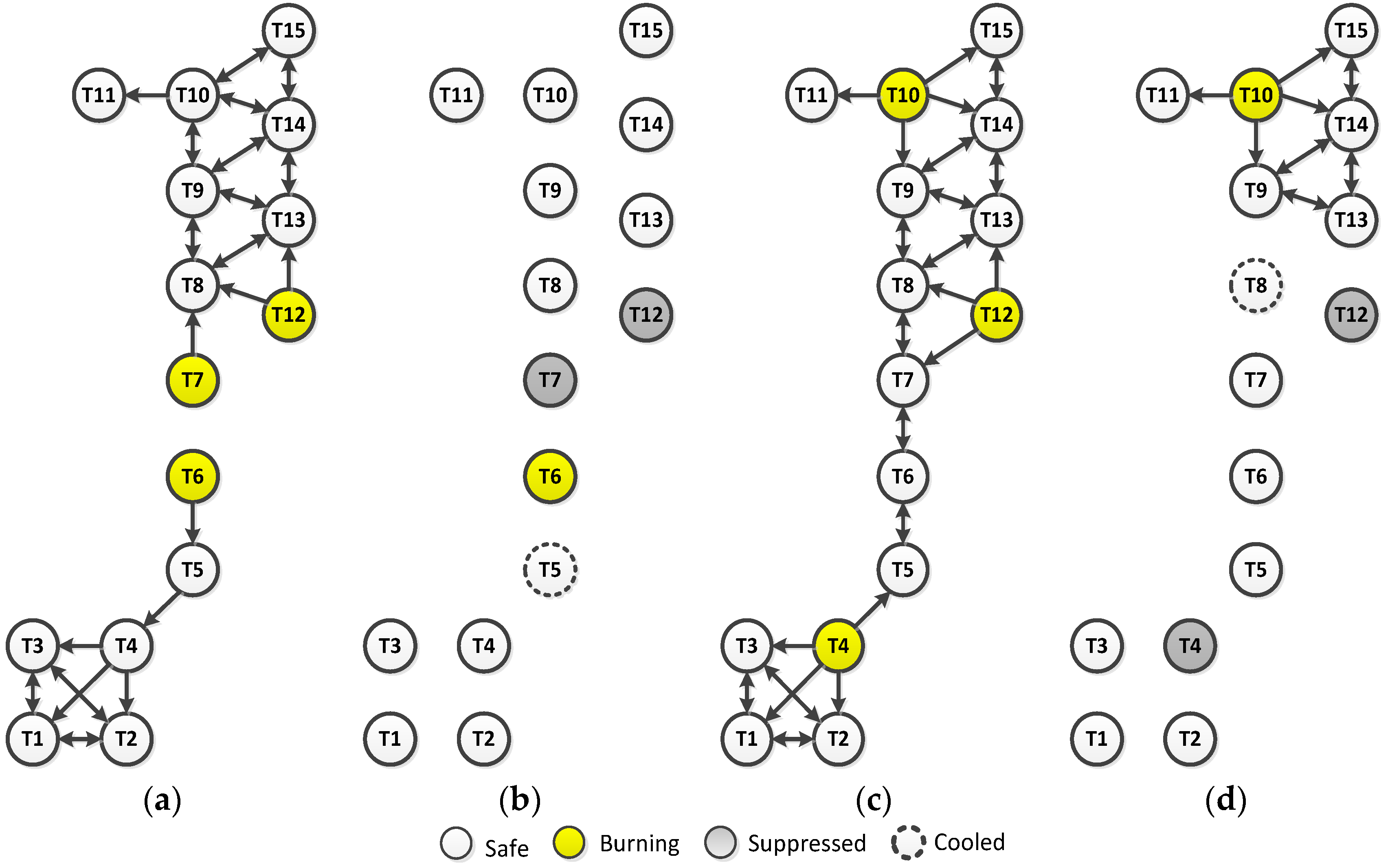3.1. An Example
Figure 1a depicts the schematics of an oil terminal which consists of six identical gasoline storage tanks. Considering tank fires as the most likely accident scenario, for illustrative purposes, the hypothetical heat radiation intensities emitted from and received by the tanks are presented as a weighted adjacency matrix in
Figure 1b, where
Qij is the amount of heat tank T
j receives from a tank fire at tank T
i (kW/m
2). Since all the tanks are atmospheric, the minimum heat radiation to spread the fire from a burning tank to a neighboring tank can be considered as 15 kW/m
2 [
33]. It should be noted that having the dimension of the tanks, the separation distances between them, the weather conditions, the type and amount of flammable contents, etc., consequences assessment techniques and software such as ALOHA [
34] can be used to calculate accurate amounts of heat radiation. Based on the adjacency matrix, the potential fire spread paths in the terminal can be presented as a directed graph in
Figure 1c.
In order to identify optimal firefighting strategies under insufficient resources, we introduce some constraints to the amount and type of the available firefighting resources:
Due to the limited amount of equipment, the fire brigade would not be able to work on more than two storage tanks at a time, and
Out of these two storage tanks, due to limited types of equipment, one should be a burning tank and the other an exposed tank. In other words, the firefighters can only afford to suppress a burning tank and to cool another exposed tank simultaneously.
The aim of the fire brigade would be to prevent/delay the fire spread so that the still-safe storage tanks could be saved. In other words, the suppression of a burning tank, for instance, is performed with the aim of saving the neighboring tanks rather than saving the burning tank itself.
Further, when a storage tank has been exposed to an adjacent burning tank for a while unbeknown to the firefighters, the cooling of the exposed tank would be a more conservative strategy than the suppression of the burning tank [
19]; however, in the case of crude oil storage tanks, the suppression of burning tanks should be given priority over the cooling of exposed tanks, due to the imminent risk of boil-over [
35].
3.3. Comparison between Graph Theoretic and Influence Diagram Approaches
Khakzad et al. [
12] developed a methodology based on BN for domino effect modeling in the chemical and process spatial infrastructures. In their approach, the units are presented as nodes of the BN while the intensity of heat radiation between them are presented as directed arcs. Knowing the intensity of received heat radiation along with the type (e.g., atmospheric or pressurized) and size of exposed units, the probability of fire escalation can be estimated using probit functions [
10,
33]. Among the exposed units, the one with the highest escalation probability is identified as the secondary unit involved in the fire escalation (domino effect). Following the same approach and considering possible synergistic effects, the tertiary units can be identified.
Figure 8a,b display the BNs for modeling the fire spread in the tank farm given a single fire at T1 (relevant to Scenario 1 and 2) and two separate fires at T1 and T5 (relevant to Scenario 3), respectively. To help distinguish between the graph theoretic approach and the BN approach, the nodes in the BNs have been presented as ellipse. For the sake of clarity, the conditional probability table of node T5 in
Figure 8a given its immediate parents T2 and T4 have been reported in
Table 4.
As previously mentioned, the escalation probabilities in
Table 4 can be calculated using probit functions [
10,
33]. Since the aim of the present study is to identify an optimal firefighting strategy based on relative importance of the storage tanks not their exact escalation probabilities, and because the tanks are of the same type and dimension, we calculate the escalation probabilities using a linear relationship:
where
Pi is the escalation probability of the atmospheric tank exposed to a heat radiation of intensity
Qi (kW/m
2). Further, the numerator 15 in Equation (6) denotes the escalation threshold of atmospheric tanks [
33]. Accordingly, the escalation probabilities of tank T5 in
Table 4 could be calculated as
P2 = 1 − 15/20 = 0.25,
P4 = 1 − 15/40 = 0.625, and
P24 = 1 − 15/(20 + 40) = 0.75. It should be noted that the escalation probability given in Equation (6) is merely for illustrative purposes and is not aimed at replacing the probit functions.
The BN in
Figure 8a can be extended to influence diagrams in
Figure 9a,b in order to identify optimal firefighting strategies in Scenarios 1 and 2. In
Figure 9a, for instance, the decision node incorporates eight firefighting strategies (decision alternatives) in form of T
i–T
j (for
i = 1, 2 and
j = 3, 4, 5, 6), standing for suppression of T
i and cooling of T
j. For example, the decision alternative T1–T3 indicates that the corresponding firefighting strategy involves the suppression of T1 and the cooling of T3. The dashed arcs from T1 and T2 to the decision node implies that the firefighting strategies would be conditioned to the observation of fires at T1 and T2.
The impact of the decision alternatives on the nodes of the influence diagram can be reflected by making modifications to the conditional probability tables (escalation probabilities) of the exposed tanks which are being influenced by the decision node. Part of the modified conditional probability table of T5 in
Figure 9a has been illustrated in
Table 5. It should be noted that some entries in
Table 5 might seem contradictory at first glance if the entire influence diagram is not taken into consideration.
For example, on the second row of
Table 5, the decision T1–T4 denotes the cooling of T4 (i.e., T4 is safe and is being cooled to keep safe) whereas the state of T4 is Fire. Such contradiction can be justified if it is noted that under the same decision alternative the probability of T4 being on fire would be equal to zero (the arc from “Decision” to T4). As such, the escalation probability of T5 (2nd row in
Table 5) is only due to the heat radiation received from T2; thus,
P(T5 = Fire | d = T1 − T4, T2 = Fire, T4 = Fire) =
P2. Following the same approach, the BN in
Figure 8b can be extended to the influence diagram in
Figure 9c to identify the optimal firefighting strategy in the event of Scenario 3.
In the influence diagrams shown in
Figure 9a–c, the node “Utility” has been connected to the still-safe storage tanks so that only the further damage caused by the fire spread can be taken into account in the decision making. Since the storage tanks are identical, we have assumed that a damaged storage tank (due to fire spread) is associated with a disutility of −10.0 while the disutility of a safe tank is 0.0. For example, in
Figure 9a,
U(T3 = Safe, T4 = Fire, T5 = Fire, T6 = Safe) = −20.0.
Implementing the influence diagrams in GeNIe software [
37], the expected disutility of firefighting strategies (decision alternatives) are reported in
Table 6. In Scenario 1, the optimal decision (attributed to the lowest disutility) would be to suppress T2 and to cool T4 (see the result of the graph theoretic approach in
Section 3.2.1). Likewise, in the event of Scenario 2, the suppression of T2 and the cooling of T5 would be the optimal strategy (see the result of the graph theoretic approach in
Section 3.2.2) and the vice versa in Scenario 3 (see the result of the graph theoretic approach in
Section 3.2.3). As can be seen, the results obtained from the influence diagrams are in complete agreement with those obtained from the graph theoretic approach in the previous sections. For the sake of clarity, the lowest amount of loss (the lowest absolute amount of expected disutility) in each scenario and their corresponding decisions are depicted with bold numbers in
Table 6.

